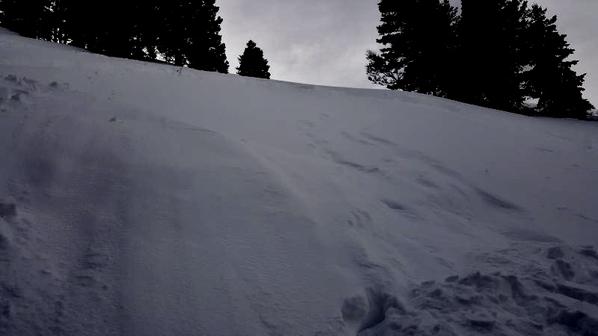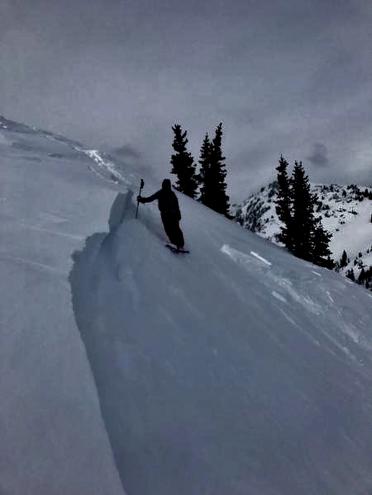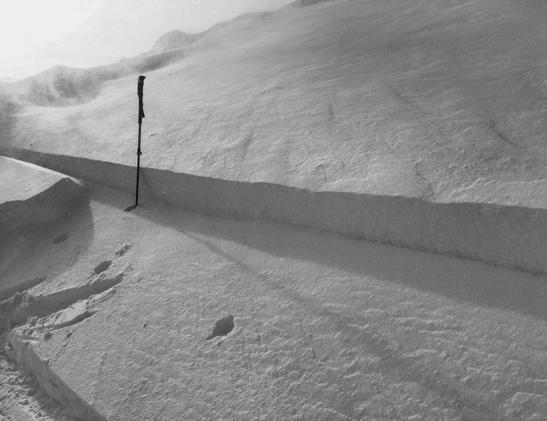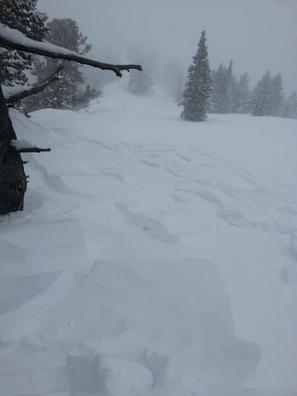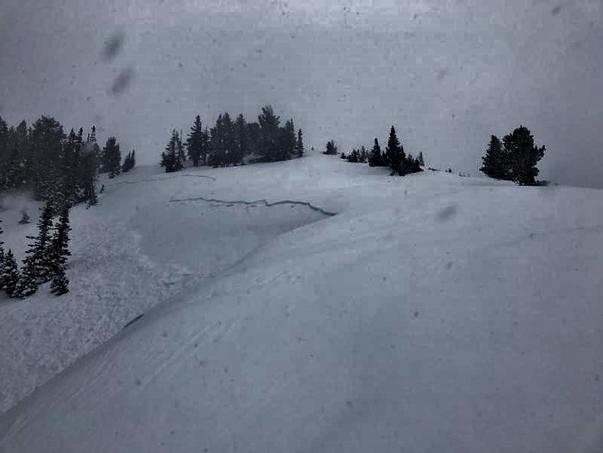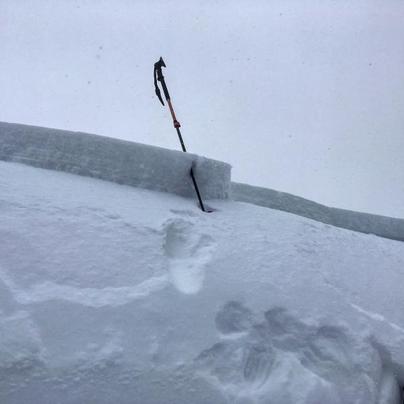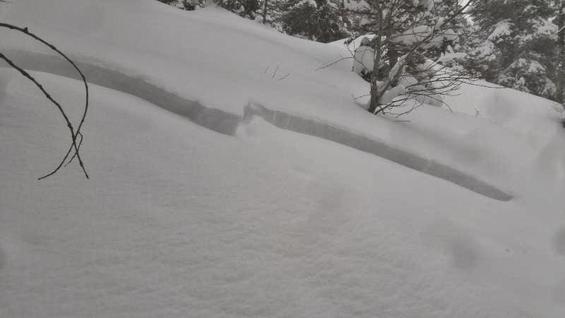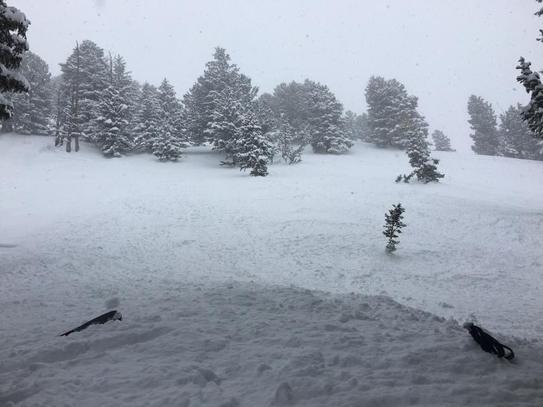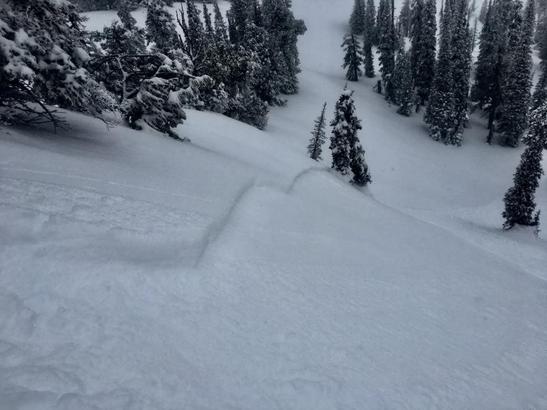
The number one clue for avalanches is avalanches.
Let's start with a summary of results from ski areas and highways. The snowpack in ski areas is different from what we see in the backcountry this time of year but can still offer us clues about what to expect. Notes about weather and snow transport are particularly helpful. If ski areas are triggering wind slabs, we should expect to trigger them in the backcountry.
In the Salt Lake area, snow safety teams reported upslope winds in Little Cottonwood were building cornices and transporting snow into Big Cottonwood drainages. Also, they reported many pockets of wind slab 1-2 feet deep building throughout the day from South winds. Along the Park City ridgeline, ski patrols observed many point releases triggered by backcountry skiers. These alone aren't a major problem but could become one if the loose surface snow is capped by a slab of snow either from snowfall or wind transported snow tonight.
In the Ogden area, high elevation areas produced natural avalanches sometime Saturday night/Sunday morning. Also, some wind slabs just big enough to bury a person were easily triggered with ski cuts.
Activity from the backcountry from Sunday, Jan 22.
*Thanks to everyone who has submitted info about recent avalanche activity. It makes us all safer and helps everyone come home at the end of the day. Thank you!
There are often fresh wind slabs at high elevations, but notable today (Sunday) were the avalanches occurring at low elevations. None of these were particularly big, BUT with more snow and more wind expected Sunday nigh/Monday morning, avalanches on Monday should be a bigger. It's a pretty easy formula: When we have avalanche activity and we get more snow and more wind, we get more avalanches.
In most areas, these slides are breaking on low density, new snow. This type of instability can heal in several days and the danger can drop quickly. However, some slides have broken on faceted snow. Faceted snow crystals take longer to heal, and this problem will take longer to go away. It's not widespread, and you're most likely to find it in places outside head of Big and Little Cottonwood Canyons. Also, this layer appears to be much weaker and widespread in the Ogden area mountains.
Mount Aire in Lambs Canyon - unintentionally triggered, 50' wide, 18" deep on a sub ridge at 7500' on a North aspect. Photo/Ob - M. Dbeisi
Rocky Point - intentionally triggered, 60' wide, 2' deep, ran 200'. Photo/Ob - Malone
Daly Canyon (sort of between Park City and Deer Valley) - In wind exposed areas at 8000', avalanches 10-12" deep were easily triggered sometimes from far away and sometimes right at your feet. These were breaking on buried facets and/or surface hoar. Photo/Ob - N. Provo
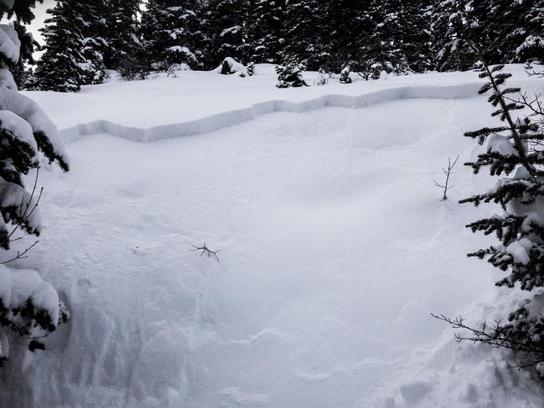
Scott's Peak (along Park City Ridge line) - intentional trigger, 100' wide, 2' deep, NE aspect, 9700', "Not sure if it would be categorize as hard slab or a soft slab but it wasn't like the light density sluffs and soft slabs of the last two days it was thick and inverted snow that wanted to drag you in with it." Photo/Ob - M. White
From Saturday, Jan 21:
Backcountry near Snowbasin - Intentionally triggered many small slides on small test slopes at elevations from 9300' to 7900'. 4"-14" deep. Some were triggered from some distance away. Photo/Ob - B. Hunt.
Mill Creek Canyon Photo/Ob - C. Brackelsberg
Summit Park (near the top of Parley's Canyon) - Many small slides easily triggered at about 9000'. Largest was 10-12" deep and 60' wide. These slides broke on small facets and some were triggered from some distance. Photo/Ob - M. White.
Primrose Cirque on Timpanogos (above Aspen Grove) - natural avalanches breaking about 8" deep but over wide areas. One about 1000' wide. Photo - J. Woodruff.
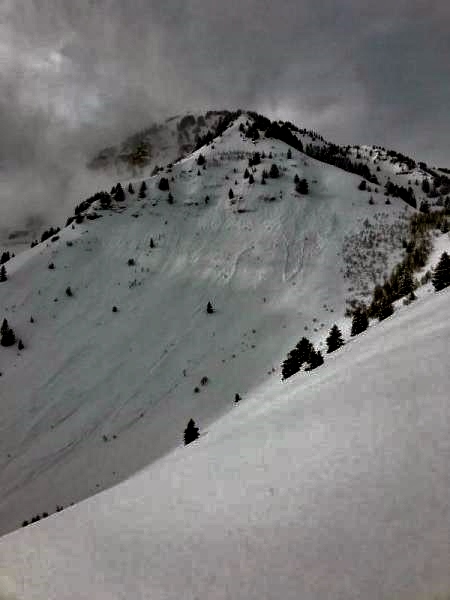
West Porter (Mill Creek Canyon) - natural avalanche hit a party under steep terrain. The party noted that this was a good lesson about knowing the terrain above. Photo/Ob - N. Wilkes
Cutler Basin (Ben Lomond Peak in Ogden Valley) - collapsing observed at 6600' on small test slope. Then this slide was intentionally triggered. It had no wind affect and broke on a layer of small facets. Photo/Ob - D. Wewer.


